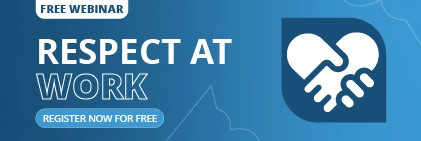Employers have an obligation to provide a healthy and safe workplace for their employees, contractors, volunteers and other people who can reasonably be connected with the workplace. Much attention goes into the regular place of work, for example, the office, the warehouse or the construction site. However, in recent years, WorkSafe authorities have been detecting a significant increase in incidents connecting with lone workers who are working alone.
Interestingly, working alone is often thought about as those people who are working remotely or in isolation, and for industries such as healthcare, community workers, hospitality and retailers who operate 24/7. However, lone working can include somebody working alone at their regular place of work, at home, or in any off-site location such as at a client’s home, at a cafe, in a hotel or an airport. The list goes on, and the challenge to Directors and those who have a responsibility and a duty of care towards the health and safety of others, the growing complexity and risk involved with lone workers is becoming a much bigger part of business as usual.
What are the risks of working alone?
Lone workers are presented with a different level of risk because they may not be able to get immediate assistance from others.
For employers, working alone increases the likelihood of:
- exposure to violence
- poor access to emergency assistance
- psychological injuries or mental health.
When working alone, there is an increased severity of workplace injuries because a person is unable to get immediate assistance from colleagues or others.
What should you look out for?
Exposure to violence and poor access to emergency assistance are the two main hazards of working alone. For example, a residential care worker working alone on the night shift or an attendant working alone late at night in a 24-hour convenience store may be a greater target for exposure to violence because they are by themselves. Working alone can increase the severity of workplace injuries. For example, a park ranger who has a snake bite has an increased risk of severe consequences if they are working alone rather than with colleagues who can help.
As an employer, what should you do?
Work health and safety laws require employers to eliminate or reduce risks to health and safety so far as is reasonably practicable. Employers are therefore required to identify and control the risks associated with the work that is conducted by a worker when working alone.
Employers must consult with health and safety representatives (HSRs) and workers so far as is reasonably practicable. Consultation must occur when an employer:
- identifies or assesses risks
- makes decisions about ways to address risks
- makes decisions about providing information and training
- plans to change the way work is done.
Safety measures to eliminate or reduce the risk of working alone, as reported by WorkSafe authorities:
To eliminate or reduce the risk of working alone, consider the following safety measures.
Buddy system
Some works present such a high level of risk that workers should not be required to do the work alone. Occupations where violence has occurred before or where no information is available fall into this category, and a buddy system is an effective way to decrease risk.
Environmental design
Workplaces can be designed to reduce the likelihood of violence. Environmental design features include:
- controlling access by installing effective barriers
- the layout of client consultation rooms
- increased visibility
- monitored CCTV.
Design solutions need to be tailored to the specific workplace, and an employer is required to take all reasonable steps to provide an environment that is healthy and safe.
Communication or location systems
Communication or location systems that can quickly locate workers or enable quick communication will help in directing assistance.
Employers are required to provide and maintain communication with workers in isolated environments (e.g. calling in or checking in regularly when support workers visit clients in their homes). Employers should maintain continuous communication with workers working in isolated environments or confined spaces or with those who are travelling in remote locations. For example, truck operators must also have a way of staying in constant communication with a driver, particularly when in unfamiliar or remote locations. Some examples of communication or location systems are mobile or radio communications and global positioning systems (GPSs). The technology selected must always be supported by the infrastructure (e.g. not all rural areas have adequate coverage for all mobile phone technologies). Risk assessments need to consider black spots and ways to ensure reasonable steps are taken to maintain communication. Best practice HR and compliance software provider, Sentrient have in its online HR System an employee locator to better serve the trackability of staff who are working remotely and to respond to workplace emergencies or in times of emergency as presented in recent times by COVID-19. Significant investment has gone into finding new ways to support better Directors and their governance, risk, compliance and HR teams to understand the location of employees better and to support lone workers and those who are working alone as a way to combat better occupational violence and aggressions and incidents such as bullying, harassment and discrimination in the workplace.
Alarms
Emergency alarms such as duress alarms can also notify authorities of workplace emergencies.
Movement records
Movement records allow you to know where workers are expected to be and can assist in managing risks. Examples are call-in systems with supervisors or colleagues or using whiteboards on-site.
Policies
Policy templates such as those provided by compliance provider, Sentrient on working alone are an important part of your governance, risk and compliance framework and act to make staff aware of their responsibility to identify, report and resolve workplace incidents and to promote a healthy and safe workplace.
Training
Training, such as the Sentrient online working alone course or the online occupational violence and aggression course, are examples of simple, easy and affordable ways to create awareness and educate staff about working alone their responsibility as lone workers, and what to expect from their employer. Policies and training are required for Directors to demonstrate they have taken all reasonable steps in the subject matter of working alone and occupational violence and aggression.
Workers who deal with potentially violent clients or are often working alone, e.g. on client sites, may require even more extensive training (e.g. workers in remote locations also need training in first aid).
Knowledge base
Local, industry or client-specific knowledge of where hazards and risks may arise can assist with good work health and safety planning. Incident reports, flagging systems, briefings, and logbooks can all help make sure that knowledge is shared between employers and workers. In most workplaces, it is unlikely that one solution will be sufficient to deal with the risks of working alone. More than one control measure will often be required.
Incident reporting
Incident reporting software like that delivered by Australia’s #1 provider of compliance software, Sentrient, further helps identify risks and incidents as they happen and encourages the identification, reporting, and resolution of culture in an organisation.
Find out more.
To find out more about awareness and education for your staff when it comes to working alone, occupational violence and aggression and work health and safety, please contact us today!





